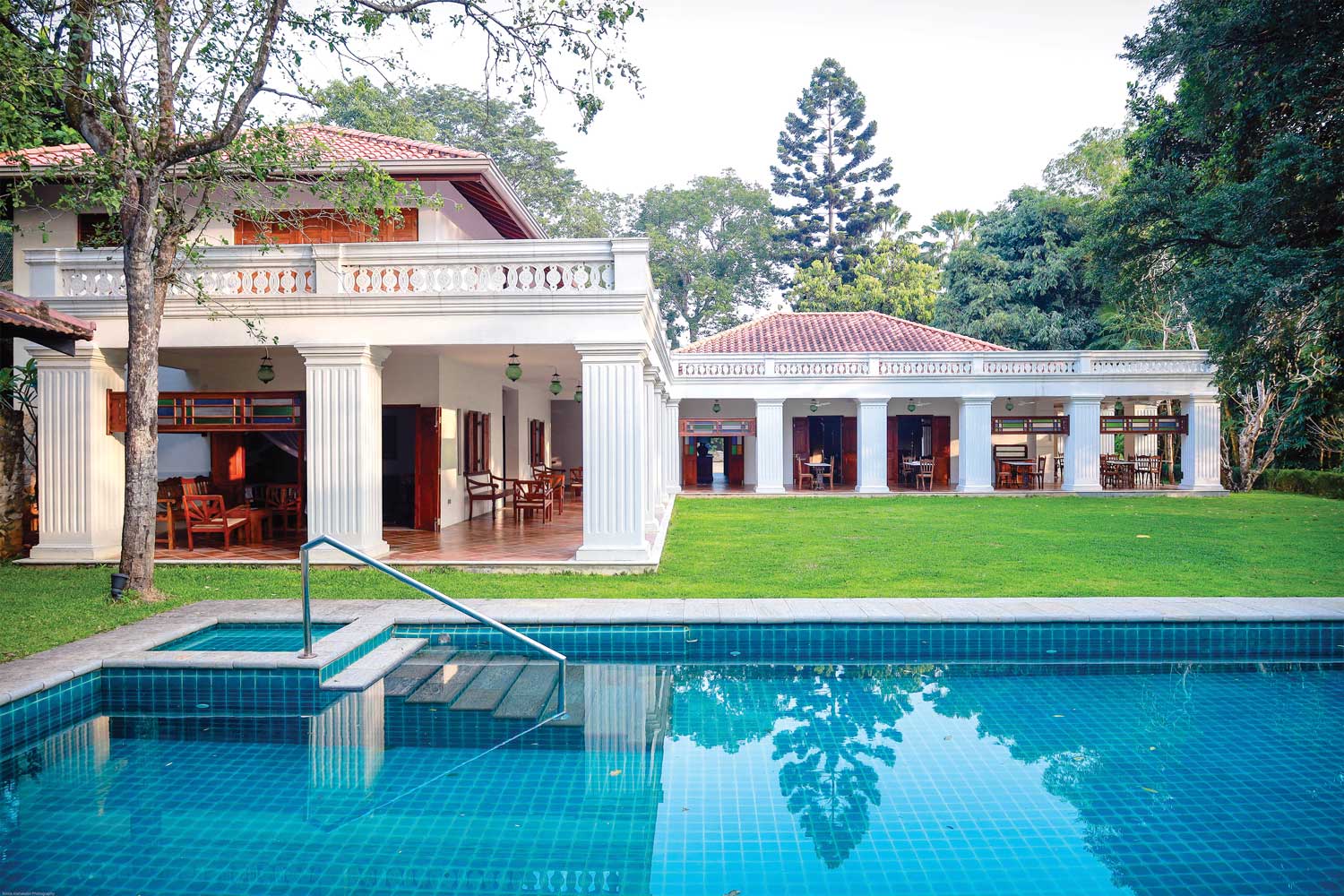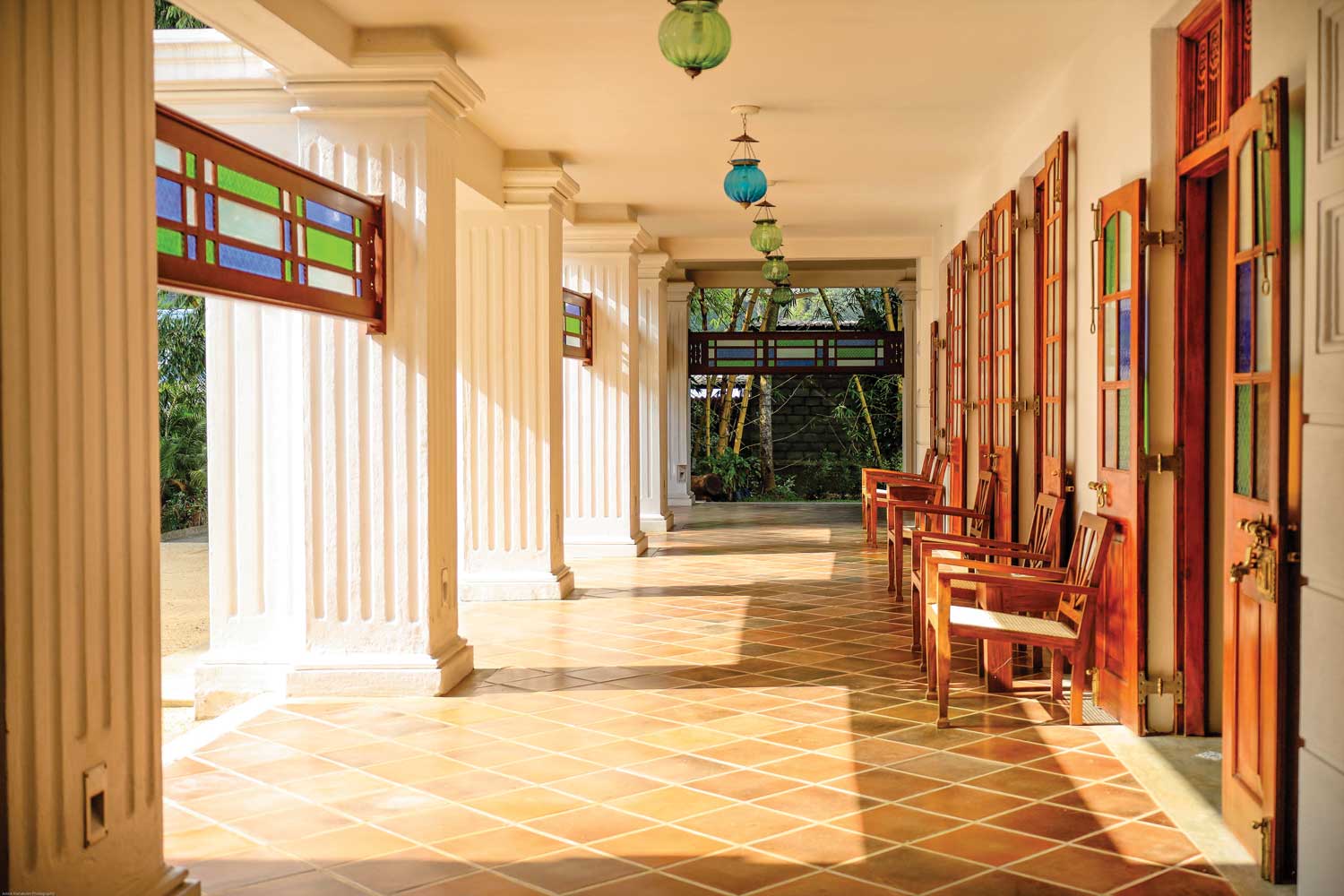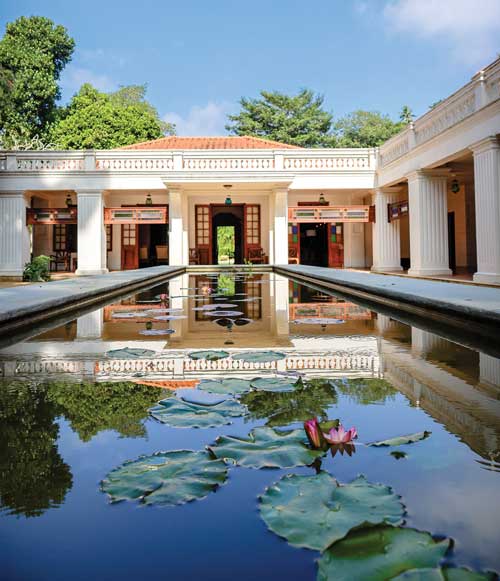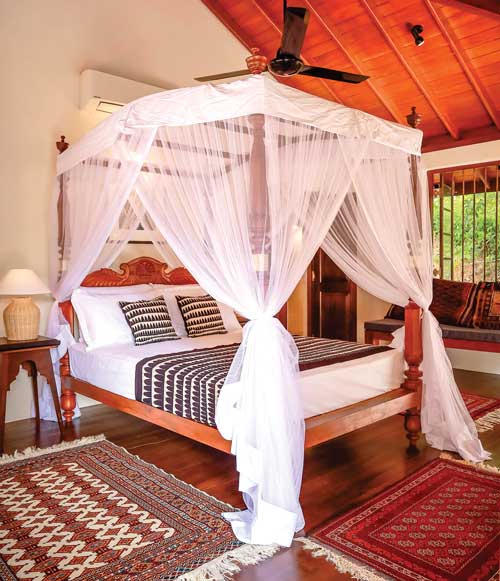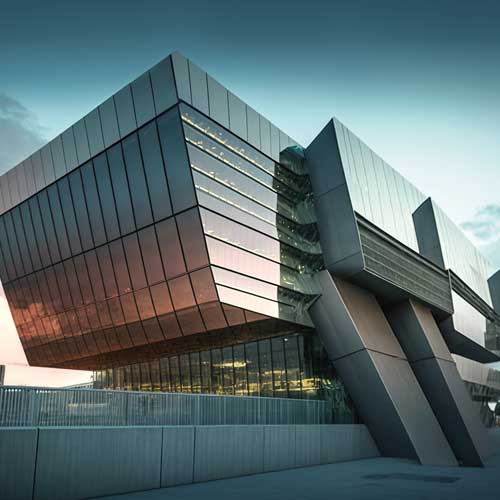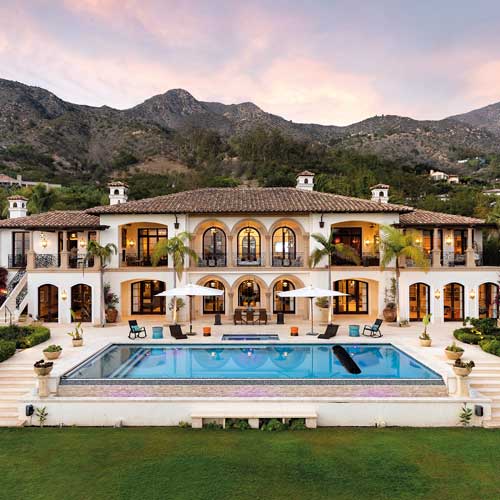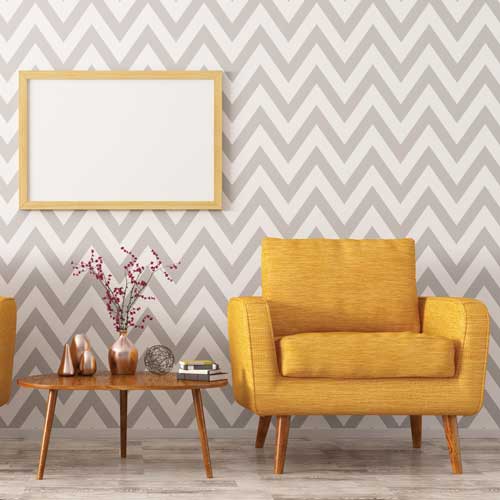A harmony of colour and texture for living spaces
Ruchira Wickramasinghe in conversation with Nicola Jayasundera
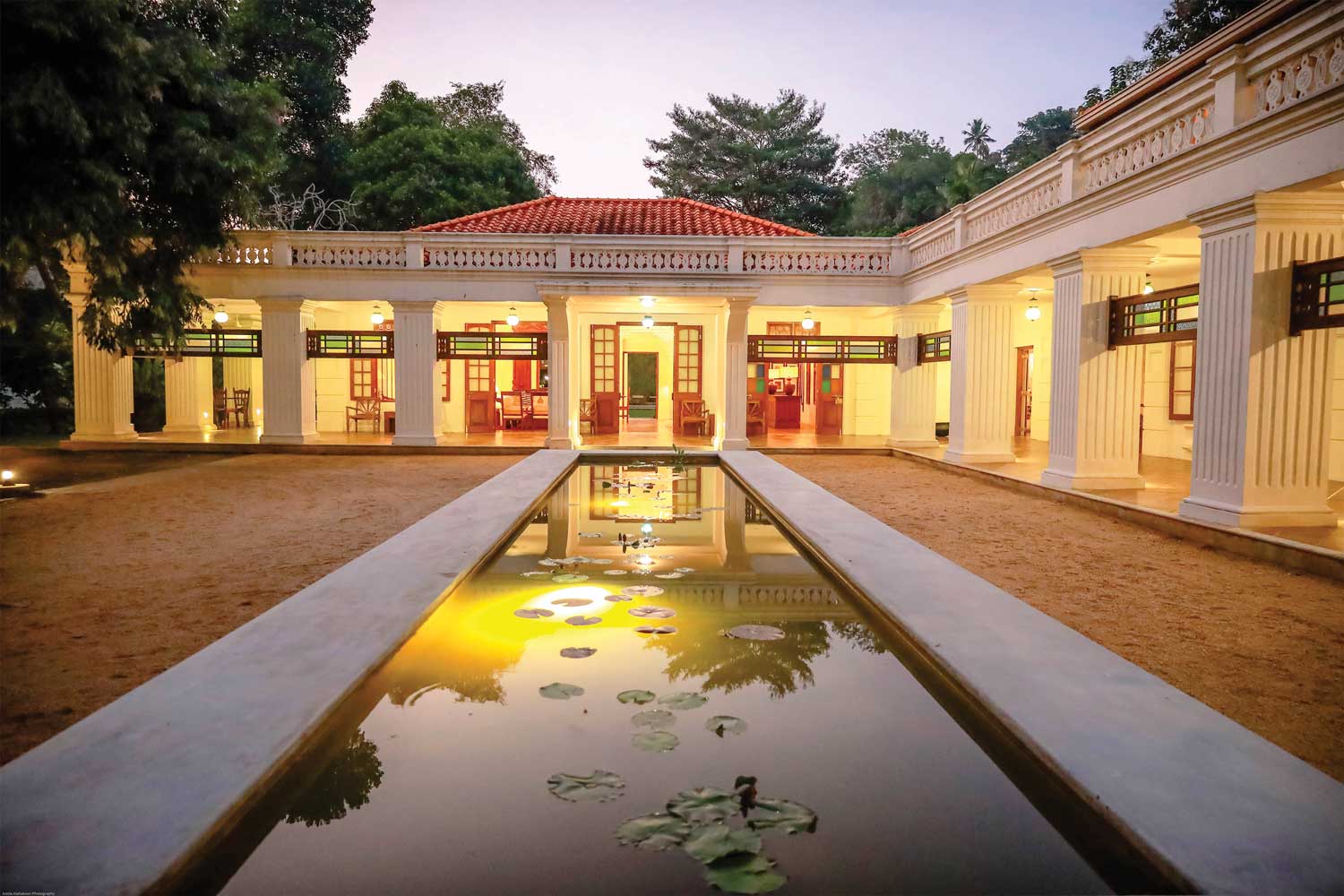
An interest in creating, as well as a fascination with colours and textures from an early age, set Ruchira Wickramasinghe on the path to becoming an architect. She has worked with and been mentored by some of the best architects in the profession, such as Yamuna D’Cruz, P. Kokuleraj, Channa Daswatte and Murad Ismail.
Ruchira considers architecture to be a lifestyle and sanctuary for the senses, affirming that it offers a quality of life that’s essential for a person’s general wellbeing. Every project is an accomplishment in a different way but renovations and restorations are the most challenging. Her current favourite is a recently restored almost 100-year-old ancestral property.
Wickramasinghe has been conferred the Geoffrey Bawa Travel Award (Sri Lanka), 17th Architect of the Year Commendation Award for Focus Countries by JK Cement (India) and CSA Felicitation Award.
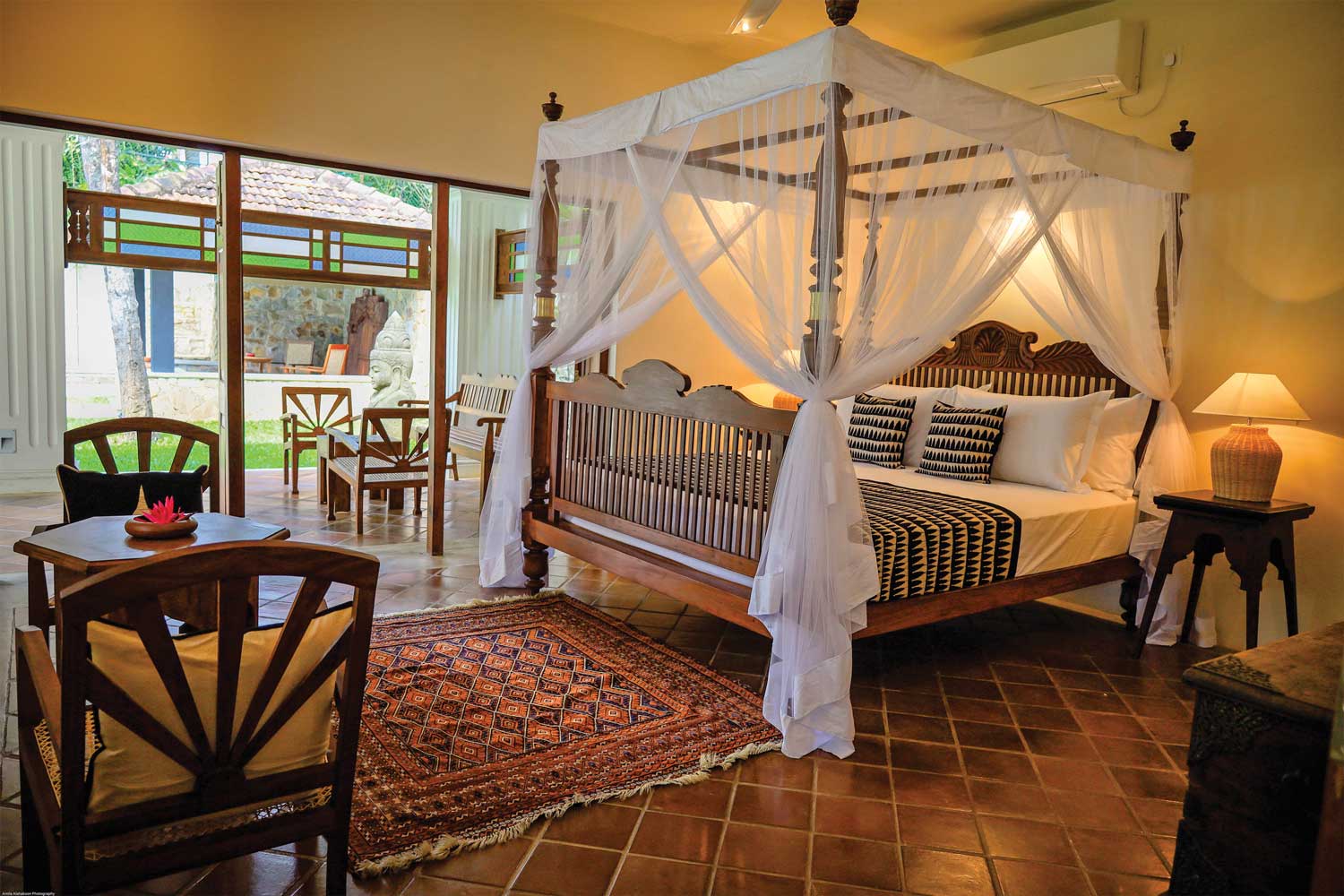
Q: In your view, what are the prevailing design trends?
A: Good architecture should be timeless, contextual and user-friendly. On the other hand, interior design may follow trends that can change periodically.
Q: How do architects balance design, functionality and aesthetics today?
A: Architecture is all about design, functionality and aesthetics acting in harmony, for the physical, mental and emotional wellbeing of the user.
Q: What’s your take on sustainable living in the local context?
A: Sustainable living means reducing one’s carbon footprint on the planet. This could be tough to do in the current context with so many options and new products entering the market; but if it is planned carefully, it’s possible.
Awareness of the 4Rs – reduce, reuse, repurpose and recycle – is also a must.
Minimalistic design; reusing items such as doors and window columns, and paving stones; repurposing used timber as structural or interior components, or furniture; and recycling wherever possible during and after construction… they’re kinder on the planet and trees can be saved whenever possible.
Q: How can one ensure long-term efficiency (in terms of materials, energy, costs and so on) in eco buildings?
A: ‘Eco’ means an ethic that isn’t harmful to the environment. But the idea of eco almost always entails the use of natural materials such as timber, which may not always be ‘eco’ as such... especially when trees have to be felled!
Our responsibility is to choose the most sustainable option from what’s available. Locally available materials generally have the least impact on the environment but they need to be assessed on a case-by-case basis. The same goes for energy efficiency, cost-effectiveness and feasibility during and after construction.
The maximal use of natural light, ventilation and renewable energy whenever possible, as well as harvesting rainwater, are some ways to be cost-effective and sustainable.

Q: And how does architecture contribute to the growth of a culture?
A: As a nation, we are already blessed with a rich heritage and diverse culture. Embracing the new is good but we must take note of the past as we go forward.
As designers, we can use local crafts and products such as dumbara weaving, which was recently recognised as a UNESCO World Cultural Heritage; beautiful batiks; intricate beeralu work; exquisite silver and brassware, lacquerware, cane items and so on. These will not only make our work richer and unique but also help the craftsperson with his or her livelihood.
If we look at the work of great architects such as Vidya Jyothi Geoffrey Bawa and Charles Correa for example, they always celebrated local crafts and heritage through architecture.

